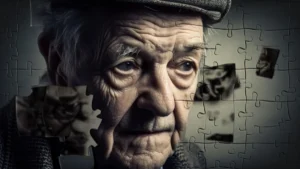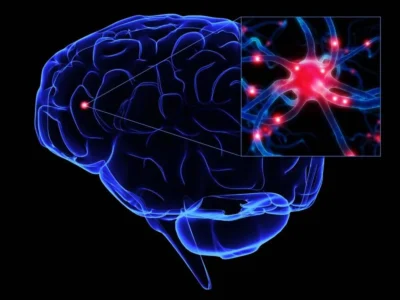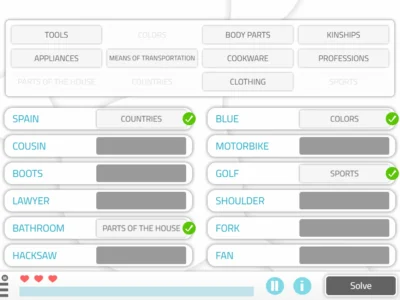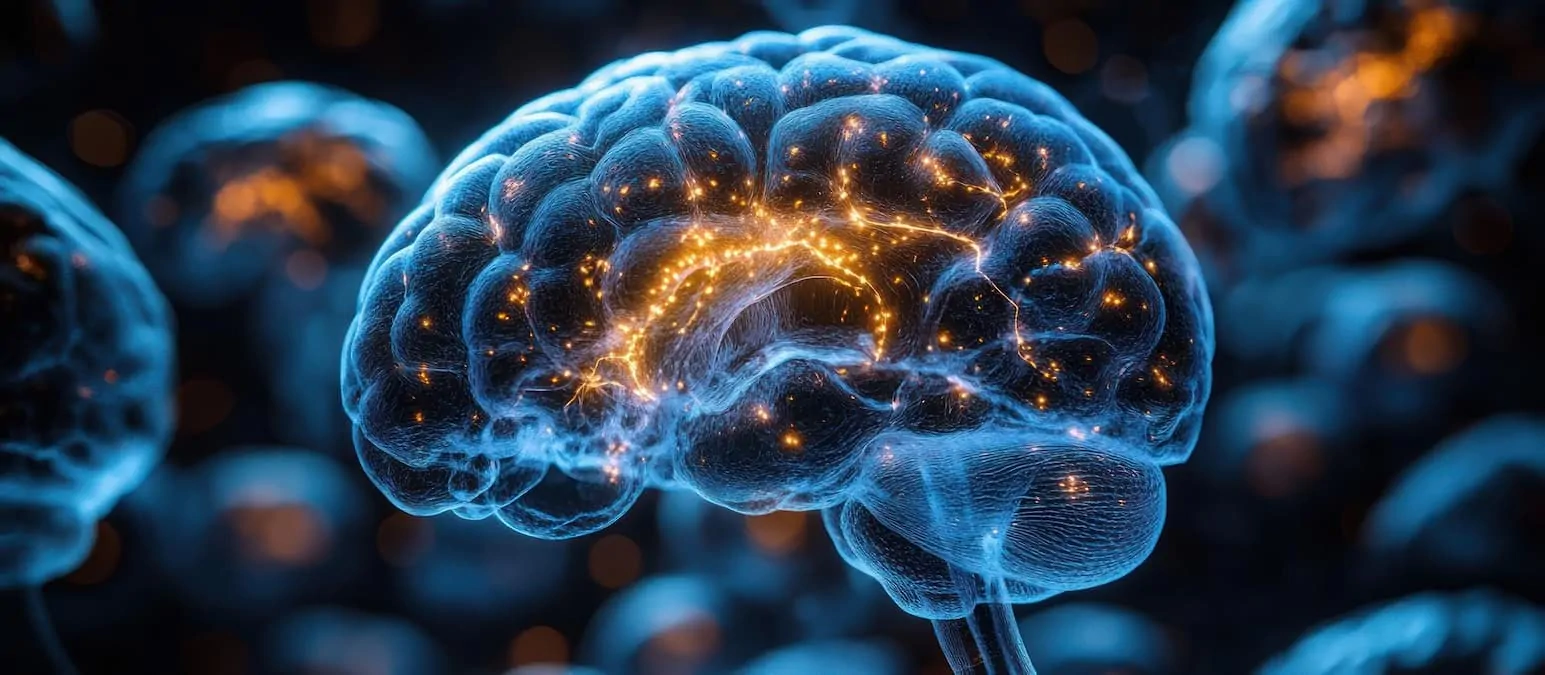Neuropsychologist Ángel Martínez Nogueras presents in this article how anosognosia manifests in Alzheimer’s disease and its impact on activities of daily living.
What is anosognosia
The anosognosia or lack of awareness of one’s own illness or disability is a common symptom in various neurological disorders and conditions. People who suffer from it do not recognize their own cognitive or motor limitations, even though these are obvious to others. This lack of awareness is not due to deliberate denial or lack of self- or environmental understanding, but to a failure in self-perception caused by brain injury. Simple to define, but difficult to understand and tolerate for those of us who accompany the patient with anosognosia in their day-to-day life, including professionals.
The deficit of illness awareness or anosognosia is, together with amnesia, one of the conditions that generates the most literature in Alzheimer’s disease (AD). However, the attention anosognosia receives from the research field has not been translated to the real world, that is, to what families and professionals know about this condition. In fact, the bulk of families who come to “neuro” consultations do so without the slightest idea that anosognosia might even exist. As for any notion they might have about the importance of understanding and managing it in the family environment, we don’t even talk about it.
Anosognosia in numbers
Although figures are very variable, possibly because there is neither unanimity in its approach nor a “gold standardd” measure in its assessment, it is estimated that between 20% and 80% of patients with AD will present a deficit of illness awareness at some point during the disease course (Starkstein, 2014). If we narrow the viewpoint and focus on the prodromal and preclinical phases, that is, the earliest stage of the disease, disagreement is even greater.
In these cases, the available data have been very contradictory, alternating studies that found evidence of anosognosia in the early stages of AD with others that did not find it (Roberts et al., 2009; Spalletta et al., 2012; Piras et al., 2016). However, this issue is gradually becoming clearer, and a series of recent findings confirm signs of anosognosia in subjects who are in both mild cognitive impairment and in the preclinical and prodromal stages of AD (Guieysse et al., 2023).
Estimates suggest that at least 10% of these patients could present a deficit of illness awareness, with this percentage gradually increasing as successive stages of the disease progress.

Subscribe
to our
Newsletter
Anosognosia in Alzheimer’s disease
This finding of early anosognosia is not trivial, as it will be a very relevant sign in the patient’s disease course, and detecting it as early as possible can alert us to what may happen later. In this sense, the information being gathered about anosognosia suggests that its early presence is related to a higher risk of progression from mild cognitive impairment to Alzheimer’s, a worse disease prognosis, greater caregiver burden, increased severity of psychopathological symptoms such as apathy, delusions, depression, anxiety, irritability, agitation, or disinhibition, and, furthermore, with amnestic and dysexecutive cognitive deterioration (Starkstein et al., 2006; De Carolis et al., 2015; Mak et al., 2015; Gerretsen et al., 2017; Vannini et al., 2017).
At the neuroanatomical level, as with any cognitive process, there is no single place where the capacity for self-awareness of illness or health resides; we must think that this capacity or function emerges from the combined activity of multiple brain regions, that is, from a neural network. Thus, anosognosia would be explained by a failure in the functioning or disconnection between the brain regions involved in access, retrieval and updating of information (posterior midline, medial temporal, inferior parietal cortices), in monitoring, evaluation or control (medial and lateral prefrontal cortices), or in introspection and self-awareness (anterior and posterior cingulate cortex and precuneus).
Although the literature on this topic is extensive and could fill several blog posts, in general, neuroimaging studies show that anosognosia in early stages of Alzheimer’s disease may be related, more than to structural changes, to hypometabolism and cerebral hypoconnectivity in regions such as the anterior and posterior cingulate cortex, precuneus, bilateral medial temporal lobes, right lateral temporal lobe and anterior basal forebrain, that is, regions typically related to AD (Starkstein, 2014; Senturk et al., 2017; Vannini et al., 2017; Salmon et al., 2023).
So far we have described what anosognosia is and its neuroanatomy, but how anosognosia emerges from brain dysfunction — at the cognitive, behavioral or emotional level what is failing. There are several theories or ways to explain the foundations of anosognosia; perhaps one of the most widespread explanations is that proposed by the Cognitive Awareness Model (CAM), a modular cognitive model that links anosognosia with amnestic and executive deficits.
In summary, according to the CAM there would be three factors related to anosognosia: one related to a deficit in the consolidation of new and updated information about oneself; another related to a deficit in the process of comparing our current abilities with past ones; and a third related to a deficit in the process of updating the person’s cognitive status.
However, I propose here another interesting idea that can broaden the previous viewpoint on anosognosia: the dual-route mechanistic hypothesis. This hypothesis suggests that both the error-monitoring systems and the emotional processing systems are key elements for self-awareness, with different impacts on the emergence of anosognosia in Alzheimer’s.
On one hand, a failure in the error-monitoring system would have a direct impact on error awareness, thus preventing patients from becoming aware of their illness when they fail even simple tasks. On the other hand, a deficit in the emotional processing system would mean that patients are able to detect their errors, but are unable to assign an appropriate emotional value to them or to understand their consequences and adapt their behavior accordingly. And, in third place, the most severe situation of the three, in which both error monitoring and emotional processing fail, resulting in a patient who is unable either to learn from their mistakes or to adapt their behavior (Andrade et al., 2023).
Impact of anosognosia on daily life
How does all of the above translate into real life? Let’s look at the deficit of illness awareness from the perspective of a real clinical case with a woman.
A 61-year-old woman, diagnosed with Alzheimer’s disease at 58, who after 3 years of evolution from diagnosis is in the mild stage according to the Global Deterioration Scale (GDS) by Reisberg. She presents with anterograde episodic memory deficit, mild signs of disinhibition, suspiciousness, sleep disturbances, emotional lability, a single episode of disorientation to place and a lack of awareness about her amnesia and about her ability to perform some activities of daily living (ADLs).
Still independent for all basic ADLs and for some instrumental ones. A lifelong homemaker and good cook, but now she makes mistakes in the kitchen: some dishes lack or have too many ingredients, sometimes she burns them or leaves them undercooked; on two occasions she has burned herself by putting her fingers into the hot oil in the pan to turn some food; perishable foods go bad in the refrigerator (she doesn’t remember the purchase date) and she accumulates several packages of the same foods in the kitchen cupboards, while missing others she usually uses. But she still wants to cook and go shopping, although she forgets the items on the shopping list before leaving the house, posing a risk of food poisoning, injuries from cuts and burns, or being cheated out of money when paying at a store.
Her relatives, worried, tell her that she is losing faculties, that she no longer prepares all meals well and that she should let herself be helped in the kitchen. At those times she flatly denies everything, becomes extremely angry and never recognizes her limitation in this aspect of daily life. In the clinic she does not recognize these deficits either. This situation generates continuous arguments, fights, verbal aggression, suspicions and is a significant source of emotional disturbances and burden for the spouse and children.
Anosognosia has a profound impact on the daily lives of affected individuals and their families. For the person with Alzheimer’s, lack of awareness can lead to a false sense of security, increasing the risk of accidents and exposure to dangerous situations. For caregivers and family members, anosognosia adds a great emotional burden and practical challenges, as their efforts to help or protect their relative may be rejected or misinterpreted, generating conflicts and frustration. Our job is to make family members understand that their wife or mother has not become stubborn and that it is not that she does not want to acknowledge she needs help at home, but that a neurobiological mechanism is broken that prevents her—the process of scanning and supervising health status relative to reality. Sometimes I give them the example that getting their relative to see reason is like asking someone to drive a car without an engine. It is simply impossible.
Conclusions
Anosognosia in the early stages of Alzheimer’s disease can be a catalyst for situations difficult to resolve that affect both the patient and their environment, since we can find a person with cognitive deficits that are already noticeable in their level of performance in activities of daily living, but who does not recognize them and still appears as an active person, with their own initiative, independent in performing basic and instrumental activities of daily living, and, very importantly, still maintaining the idea of playing an active role in household care and organization. Anosognosia in Alzheimer’s is a complex challenge, which makes it essential that professionals and family members understand this condition to provide appropriate care and improve patients’ quality of life.
As neuroscientist Antonio Damasio said, “We are stories we tell ourselves”. Anosognosia shows us how these stories can become distorted, with devastating consequences for identity and personal relationships.
If you want to learn some guidelines for managing anosognosia in the family environment, we invite you to visit this link.
Bibliography
- Andrade, K., Guieysse, T., Medani, T., Koechlin, E., Pantazis, D. y Dubois, B. (2023). La hipótesis de la vía dual para la aparición de anosognosia en la enfermedad de Alzheimer. Frontiers in Neurology , 14 , 1239057.
- De Carolis, A., Cipollini, V., Corigliano, V., Comparelli, A., Sepe-Monti, M., Orzi, F., … & Giubilei, F. (2015). Anosognosia in people with cogni-tive impairment: association with cognitive deficits and behavioral dis-turbances. Dementia and geriatric cognitive disorders extra, 5(1), 42-50.
- Gerretsen, P., Chung, J. K., Shah, P., Plitman, E., Iwata, Y., Caravag-gio, F., … & Graff-Guerrero, A. (2017). Anosognosia Is an Independent Predictor of Conversion From Mild Cognitive Impairment to Alzheimer’s Disease and Is Associated With Reduced Brain Metabolism. The Journal of clinical psychiatry, 78(9), e1187-e1196.
- Guieysse, T., Lamothe, R., Houot, M., Razafimahatratra, S., Medani, T., Lejeune, F. X., Dreyfus, G., Klarsfeld, A., Pantazis, D., Koechlin, E., & Andrade, K. (2023). Detecting Anosognosia from the Prodromal Stage of Alzheimer’s Disease. Journal of Alzheimer’s disease: JAD, 95(4), 1723–1733. https://doi.org/10.3233/JAD-230552
- Mak, E., Chin, R., Ng, L. T., Yeo, D., & Hameed, S. (2015). Clinical associations of anosognosia in mild cognitive impairment and Alzhei-mer’s disease. International journal of geriatric psychiatry, 30(12), 1207-1214.
- Piras, F., Orfei, M. D., Caltagirone, C., & Spalletta, G. (2016). Self-awareness in mild cognitive impairment: quantitative evidence from systematic review and meta-analysis. Neuroscience & Biobehavioral Reviews, 61, 90-107.
- Roberts, J. L., Clare, L., & Woods, R. T. (2009). Subjective memory complaints and awareness of memory functioning in mild cognitive im-pairment: a systematic review. Dementia and geriatric cognitive disor-ders, 28(2), 95-109.
- Salmon, E., Meyer, F., Genon, S., Collette, F., & Bastin, C. (2023). Neural correlates of impaired cognitive processes underlying self-unawareness in Alzheimer’s disease. Cortex.
- Senturk, G., Bilgic, B., Arslan, A. B., Bayram, A., Hanagasi, H., Gurvit, H., & Emre, M. (2017). Cognitive and anatomical correlates of ano-sognosia in amnestic mild cognitive impairment and early-stage Alzhei-mer’s disease. International psychogeriatrics, 29(2), 293-302.
- Spalletta, G., Girardi, P., Caltagirone, C., & Orfei, M. D. (2012). Ano-sognosia and neuropsychiatric symptoms and disorders in mild Alz-heimer disease and mild cognitive impairment. Journal of Alzheimer’s Disease, 29(4), 761-772.
- Starkstein, S. E., Jorge, R., Mizrahi, R., & Robinson, R. G. (2006). A diagnostic formulation for anosognosia in Alzheimer’s disease. Journal of Neurology, Neurosurgery & Psychiatry, 77(6), 719-725.
- Starkstein, S. E. (2014). Anosognosia in Alzheimer’s disease: diagnosis, frequency, mechanism and clinical correlates. Cortex, 61, 64-73.
- Vannini, P., Amariglio, R., Hanseeuw, B., Johnson, K. A., McLaren, D. G., Chhatwal, J., … & Sperling, R. A. (2017). Memory self-awareness in the preclinical and prodromal stages of Alzheimer’s disease. Neuropsy-chologia, 99, 343-349.
If you liked this article about anosognosia in Alzheimer’s disease, you will likely be interested in these NeuronUP articles:
“This article has been translated. Link to the original article in Spanish:”
Anosognosia en la enfermedad de Alzheimer







 Q-learning: From Pavlov’s Experiments to Modern Neurorehabilitation
Q-learning: From Pavlov’s Experiments to Modern Neurorehabilitation
Leave a Reply